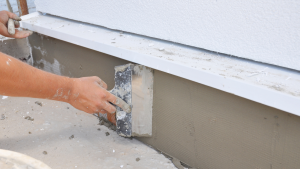Most people’s spring to-do lists do not include roof maintenance, yard work, or spring cleaning. However, as winter comes to a close, your roof should be your first concern for home maintenance.
Winter storms may damage your roof substantially, putting structural stability at risk. If you want your roof to last through the winter, give it some post-winter care.
Here are seven maintenance tips to help weather the winter and prepare your roof for spring.
1. Have Your Roof Evaluated
The first step after winter is to have a professional roofer evaluate your roof for damage. While you can examine your roof, it may have subtle signs of degradation that an unskilled eye may overlook. Furthermore, roofs are moist and slippery after the winter, making roof climbing dangerous.
To be safe, have a professional inspect your roof and write a list of all necessary repairs.
2. Check for Interior Signs of Water Damage
You may only sometimes be able to see from the outside whether your roof has water damage. Your interiors could, however, exhibit obvious evidence of water damage. Look for water spots on your ceiling. These could seem like brown rings on the surface. Also, check for peeling or bubbling paint on your walls.
Whenever you see any indications of water damage, have your contractor make repairs.
3. Clean Your Gutters
Your gutters must be cleaned before spring to do preventive maintenance. Your gutters may have been clogged with debris throughout the winter, making it difficult for water to leave. In the spring, you don’t want all that debris in your gutters.
If your gutters are clogged, water will accumulate on your roof or overflow if it rains in the spring, causing structural damage to your home. Install a gutter guard to prevent further clogs.
4. Check for Mold and Algae
The dampness on your roof throughout winter offers an excellent setting for mold and algae development. Mold and algae may damage your roof and risk your health if not removed. Clean it off if you see mold or algae on your roof.
5. Trim Your Trees
In addition to leaves and other debris falling from overhanging branches during rainstorms, these branches may break and land on your roof. Your roof may experience significant damage if this occurs. Furthermore, moisture from leaves that have fallen on your roof might harm it and result in the growth of mold.
6. Replace or Repair Damaged Shingles
With the spring rains, you want to avoid continuously wiping pools of water off your floor, which broken shingles may create. Water leaks may also cause damage to your home’s ceiling, attic, and walls. Damaged shingles also reduce the insulating characteristics of your roof since they expose the protective membrane to damage.
To avoid the problems outlined above, have your roofing specialist replace or repair damaged shingles before spring.
7. Examine Your Fascia Board and Flashing
The fascia is a wooden or metal board that covers the exposed trusses and rafters on the lower ends of your roof. On the other hand, flashing is a thin metal material used on roof connections, such as those found around chimneys, valleys, and between roofs.
Flashing and fascia prevent water from entering your house via gaps in the roof. Therefore, if they are damaged, they must be repaired immediately to avoid leaks.
Preventative roof maintenance is critical for extending the life of your roof and keeping your home secure.
Contact Toms River Stucco if you need post-winter repairs and maintenance to keep your roof in great shape as spring approaches.




